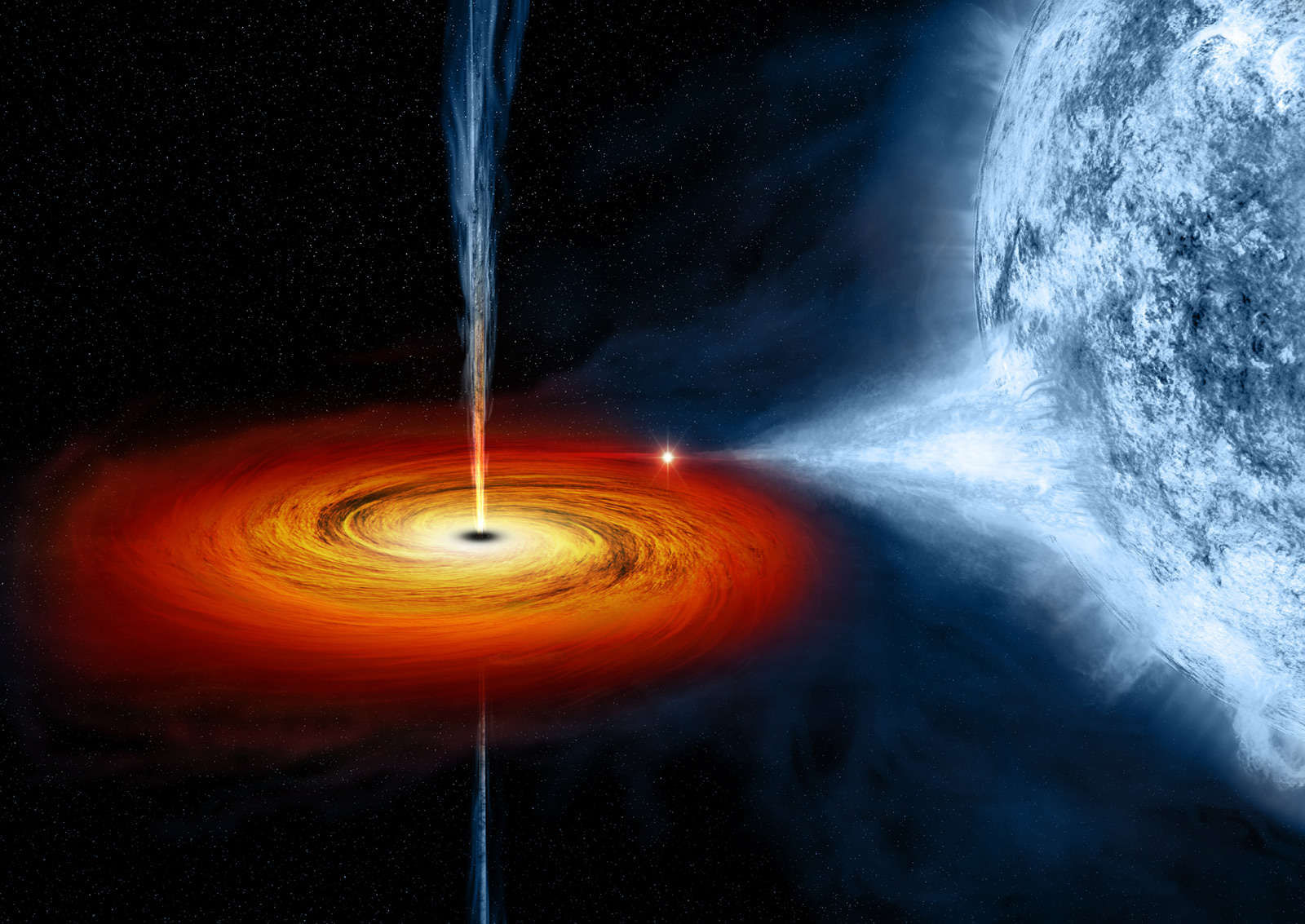Create a free profile to get unlimited access to exclusive videos, sweepstakes, and more!
More black hole weirdness: They bend light so much they self-illuminate

I like to think that anyone is capable of some self-reflection. I would not, however, have thought to include black holes in that ability.
But it appears to be the case, at least for one such beast. And it's literal: Light emitted on one side of a disk around the black hole gets bent by the fierce gravity so much it travels back down to the disk on the other side, illuminating it, and gets reflected back up so we can see it.
The black hole is called XTE J1550−564, and it's located about 14,000 light years away from Earth. It has a mass of about 9 times the Sun's, so it's an average black hole in that respect. It's orbited by a star that's very roughly 10 million kilometers away from it; it's not clear what kind of star it is but it's likely something with around the mass of the Sun or a little less.
The star is close enough that the intense gravity of the black hole is drawing matter of its surface. This material spirals toward the black hole and forms a disk around it called the accretion disk. The disk is incredibly hot, upwards of ten million degrees (!!), heated by friction as the matter swirls around the black hole. This is hot enough to emit X-rays, a very energetic form of light.
The system was discovered in 1998 by the Rossi X-ray Timing Explorer, a satellite in Earth orbit that detected high-energy X-rays coming from objects in space. Observations of the black hole showed that it underwent episodes of intense brightening called flares, possibly due to an uptick in the amount of material falling from the star onto the disk.
Although decommissioned in 2012, the observations from Rossi XTE are archived on Earth, and for this new research astronomers looked through the old data to investigate the black hole. They wanted to see what effects the flares had on the disk by looking at how the timing and energy of the X-rays changed.
Using very sophisticated physical models of the black hole and the disk, they were able to see quite a few effects, including changes in the shape and tilt of the disk during the flares. This may be due to the disk being warped, like the brim of a hat, which is more obvious during flaring episodes.
But they could also use the models to see how much light they expected to see from the disk as well. This gets complicated by the black hole itself, because black holes have such strong gravity that they severely warp space around them. Light follows this bending of space as it travels (like a car on a road going over a hill), and by the time the light gets out and away from the system it may have come from a very different place than you'd expect.
In this case what they found is that about 5% of the X-ray light emitted by the disk travels close enough to the black hole that it gets bent downward, back toward the disk on the other side. From there it's essentially reflected and travels away from the system. The disk is literally illuminating itself!
This effect can be modeled using the equations of General Relativity; in principle you can see how light gets bent around a black hole in this manner. The scientists did this calculation and found that they should expect to see about 5% of the light reflected in this manner. So, score. Observations and theory match pretty well. That's always nice to see.
We saw something like this before when the Event Horizon Telescope took images of the supermassive black hole in the center of the galaxy M87. The dark hole in the center is where the trajectories of photons are bent so much they actually orbit the black hole before falling in. The light from the disk around XTE J1550−564 isn't bent so severely as that — it's much farther out from the black hole — but still enough to self-illuminate the disk.
Another way to think of all this: If you were orbiting a black hole in a spaceship, and another spaceship were in the same orbit but on the opposite side, you'd be able to see that spaceship by looking a little bit up, away from the black hole! That's where the light would be coming from. That's unsettling.
I'm probably not the first one to say this, but black holes are weird. The thing is, they're predictably weird; they follow the rules of relativity, even if those rules are fiendishly complex and counterintuitive.
But I guess that's pretty obvious… upon reflection.





























